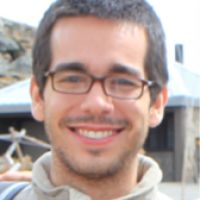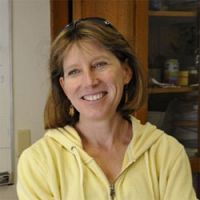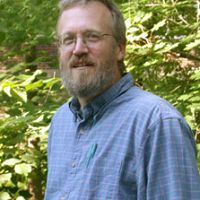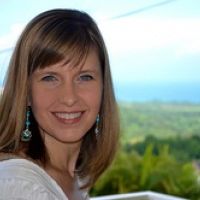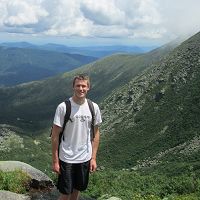Ecology and Forest Dynamics Research Group
The Luquillo Critical Zone Observatory is located in the Luquillo Mountains of Northeastern Puerto Rico, which rise from sea level to over 1075 m over a distance of 15 to 25 km. Precipitation increases with elevation such that subtropical dry conditions prevail at the coast while elfin cloud forest that can receive over 5000 mm/yr cap the upper summits. Within the Luquillo Mountains, four main Holdridge life zones are delineated on the basis of temperature and precipitation: subtropical wet, subtropical rain, lower montane rain, and lower montane wet. There are also areas of subtropical moist forest at lower elevations on the southwest slope and areas of subtropical dry along the coast and outlying islands.
This group is tagged with:
-
Disturbance and Recovery
In the Luquillo Mountains, disturbance and recovery are major drivers of ecosystem structure and function. Two striking features of the region’s disturbance regime are the long history of natural hurricanes and the recent history of human disturbance. Other natural disturbances include landslides, treefalls, floods, and droughts. Human disturbances are most common at lower elevations and include historic clearing for pasture, crops, and coffee plantations, logging, road construction, and water diversions. Luquillo forests are classified into main four types: ""Tabonuco forest"", so named for the dominant ""tabonuco"" tree (Dacryodes excelsa), covers lower elevations up to about 600 m and harbors about 168 tree species. In well-developed stands the larger trees exceed 30 m in height, and there is a fairly continuous canopy at 20 m in most areas. Tabonuco trees are especially large on ridges, where they are connected by extensive systems of root grafts. The ""colorado forest"", named for the large ""colorado"" tree (Cyrilla racemiflora), occurs above the tabonuco forest and extends to about 900 m. This forest type is a cloud forest that has a canopy of about 15 m and harbors 53 tree species. Their soils are commonly saturated and can be covered by extensive shallow root mats. At this same elevation, and in especially steep and wet areas, is the third forest type: the ""palm forest"". These forests are defined by the dominance Prestoea acuminata, which is known locally as sierra palm. Patches of palm forest are also found in saturated riparian areas in the tabonuco forest. On the highest peaks is the ""elfin cloud forest"", a dense forest which can be shorter than 3 m and which has abundant epiphytes that cover the ground and vegetation. Ascending the Luquillo Mountains through these forest types, the average tree height and diameter, number of tree species, and basal area (cross sectional area of tree stems) tend to decrease, while stem density and the abundance of epiphytes increases.
The Luquillo Mountains also support a high biomass of lizards and frogs. Native mammals include bats; rats, cats, and mongooses are introduced. Birds include several species endemic to Puerto Rico, such as the Puerto Rican Tody, an understory insectivore, and the Puerto Rican Parrot, an endangered species. Walkingsticks, which are herbaceous insects resembling short twigs, and snails are common. Streams support fish, shrimps and aquatic insects.
The Luquillo Mountains have a long history of research in forestry and ecology and is a NSF-Long-Term Ecological research site (Luq-LTER). The focus of the LUQ-LTER research ( http://luq.lternet.edu/) is on the influence of natural and anthropogentic disturbance on ecological processes. Most of the LUQ-LTER research is focused on understanding how disturbances influence ecological processes over relatively short time periods (i.e. hours to decades). The LUQ-LTER research is also concentrated in areas underlain by volcanic-clastics rocks and the surrounding coastal plain urban areas. The LCZO complements this work by focusing on how underlying lithology influences ecological processes over geologic time periods and by providing a quantitative understanding of landscape evolution and the controls on material fluxes.
For additional information on the ecology visit the LUQ-LTER
view Ecology related LCZO ongoing research on our data site here.
-
Contacts
-
Luquillo, INVESTIGATOR
8 People
INVESTIGATOR
.(JavaScript must be enabled to view this email address)
Soil Ecology
GRAD STUDENT
.(JavaScript must be enabled to view this email address)
---
COLLABORATOR
.(JavaScript must be enabled to view this email address)
IITF
Ecologist Director
INVESTIGATOR
.(JavaScript must be enabled to view this email address)
Soil Trace Gases
INVESTIGATOR
.(JavaScript must be enabled to view this email address)
---
INVESTIGATOR, PostDoc
.(JavaScript must be enabled to view this email address)
Stream Ecology, Stream biogeochemistry
Alumni-Former
Penn
Geomorphology and Ecology
.(JavaScript must be enabled to view this email address)
Field Technician, Biogeochemistry
-
-
Featured Publications
1964
Common trees of Puerto Rico and the Virgin Islands. Little, E.L., Jr., Wadsworth, F.H. (1964): Agriculture Handbook No. 249, U.S. Department of Agriculture, Forest Service
1970
A Tropical Rain Forest: A Study Of Irradiation and Ecology at El Verde, Puerto Rico. Odum, H.T., Pigeon R.F. (1970): National Technical Information Service, Springfield, Virginia
1995
Tropical Forests: Management and Ecology. Lugo, A.E., Lowe C. (1995): Springer-Verlag, Berlin, Germany
1996
The Food Web of a Tropical Rain Forest. Reagan, D.P., Waide R.B. (1996): University of Chicago Press, Chicago, Illinois
2012
A Caribbean Forestry Tapestry. Brokaw, N., Crowl, T., Lugo A.E., Mcdowell W., Scatena F.N., Waide R.B., Willig, M. (2012): Oxford University Press ISBN 978-0-19-533469-2
Explore Further


